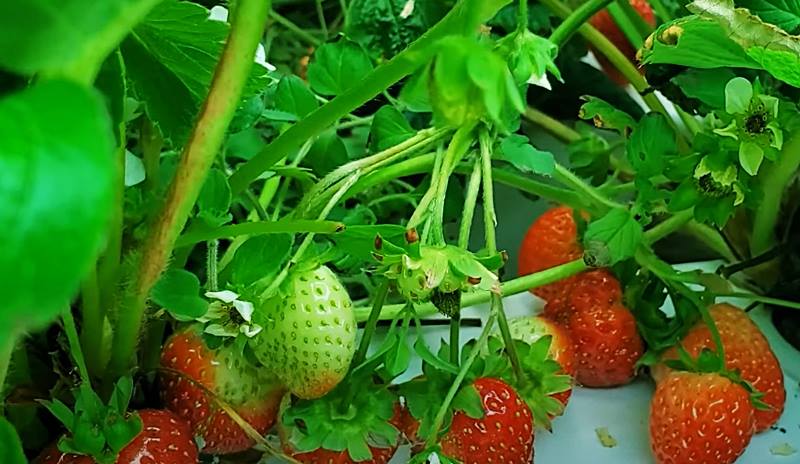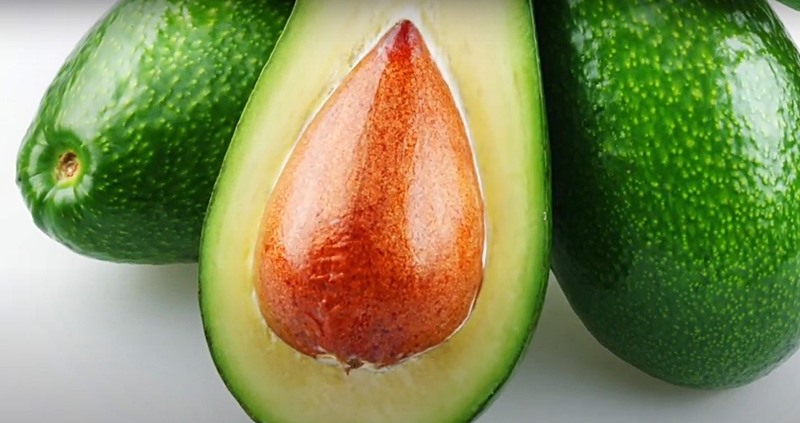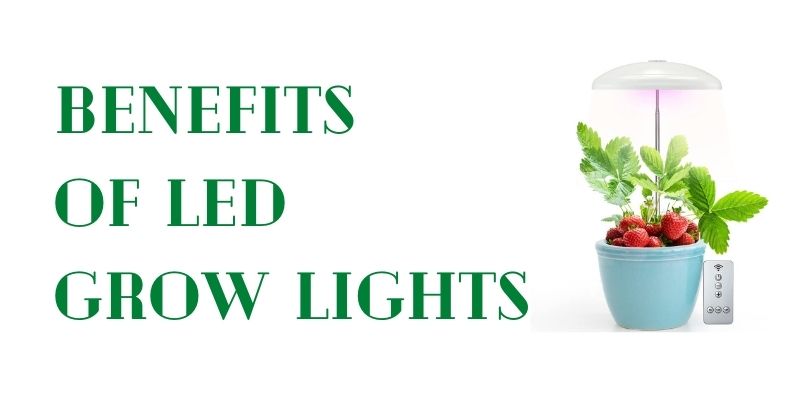Growing fruit trees with LED lights is one of the most innovative gardening methods that many gardeners have started embracing within the past decade. Over the years, gardening has evolved from traditional to smart or digital farming, influencing conventional farming methods.
You must be wondering, can you grow fruit trees indoors? I thought it was impossible because I felt that nature has it all planned and altering it would be chaotic. It turns out that what we event is through our natural thinking. Human beings studied how plants behave, and they successfully found a way to grow fruit trees indoors. It’s possible!

Sometimes it can be frustrating searching for information on the internet on how to grow fruit trees with LED lights, especially if you are a beginner. We have researched and visited farmers with success stories about this venture to give you the information you have been looking for. Here, you’ll get a proper insight to start your indoor garden.
Table of Contents
Fruit Trees You Can Grow with LED Lights
Although growing fruit trees with LED lights is applicable, some fruit trees perform better than others, and we would like to recommend them. They include:
1. Tomatoes
Tomatoes are considered vegetables and fruits as well. They require eight hours of grow light to grow.

2. Citrus Fruits
You can grow citrus trees, including lemon, lime, orange, and grapefruit under grow light. They need light between 8 and 12 hours every day. LED lights are capable of giving out that amount of light. Here is a list of the top grow light for indoor citrus trees.

3. Figs
Inedible lights can do just fine without light, but those are for interior decoration. Edible ones don’t hate cold, so grow them away from wide-open doors or windows and remember they need over six hours of light.

4. Strawberries
We all love them dark and sweet, but they also need size hours of light to mature and offer you the sweetness you crave for.

5. Avocados
Yes, avocados are fruits too, and they are expensive, so why not grow them yourself? They perform well indoors as long as they get at least 8 hours of light daily.

How Does Growing Fruit Trees with LED Lights Work?
If you plan to grow your fruit trees in places with little or no natural light, LED lights are the most applicable option. The amount of light a plant receives contributes to the taste of fruits and the general health of the fruit tree. Light is also crucial in the photosynthesis process involving converting the light energy to food and water for the plant.
In Nordic countries where daylight hours are less, replicating the sun’s light spectrum using LED lights has been the best alternative for better fruit yields.
If fruit trees are not exposed to a sufficient amount of light, they produce tiny and bitter fruits. It’s therefore essential for plants to get the right amount of light in the growth of any plant. Using LED lights can be a good source of light for your fruit trees.
Factors to Consider Before Growing Fruit Trees with LED Lights
1. The color of the light
Most gardeners are not aware that various colored lights usually affect their plants differently. The effect of a red-colored LED light on your fruit trees will be different from blue-colored light.
Some of the basic information that every gardener should know is that their fruit trees only need two kinds of light colors to grow in proper health. They need a red LED and a blue LED. Sometimes, you may incorporate a UV LED to make the tree grow properly.
If you do get expected results in your fruit trees, perhaps it is the color of the light that’s questionable. You should try out red LED, blue LED, or sometimes UV light, and your plants will begin to do better.
2. Light intensity
Although fruit trees require sufficient light for great fruition and yield, too much LED light and heat can destroy the trees. Providing an optimal amount of heat and light is the best thing to do depending on the fruit tree you are planting in your indoor garden.
Most gardeners dealing with seedlings and your fruit trees usually prefer using fluorescent to LED lights. Always ensure that the plant you are planting can grow with comfort with the heat output of your LED lights.
3. The period the lights will be on or off
Your fruit trees need enough light. For better results, expose your trees to light for around 14 to 16 hours. That means you will need to get a great LED light that can run for all those hours without blowing up. After exposing the trees to the light for those 16 hours, they should be in the dark for 8 hours.
The best way to be accurate with the hours is by setting a timer in your lighting system so that the LED lights switch on and off as needed by the trees.
4. The length or height of your fruit trees
Gardeners should be recording this as often as possible to adjust the LED lights as the trees become taller. Your trees need to receive a consistent amount of light hence the need for adjusting the lights. Consistency is one of the factors that will lead to the optimal growth of your fruit trees.
But how close should the LED lights be to your fruit trees? Well, it is recommended that the light be 6 inches away from the plant. This will depend on the kind of LED light bulbs you are using and the amount of heat they emit. Nevertheless, the LED light should be near to allow the fruit tree to receive maximum light.
5. The size of the LED lights
The source of light for your fruit trees should be LED lights instead of placing blooms over every plant. The size of the LED lights will depend highly on the amount of heat you want your trees to receive. Generally, LED lights that are larger usually emit more heat.
6. The cost of LED lights
There are diverse LED lights in the market that vary in their prices depending on their lumen level and lifespan. A LED light that is 40 watts cannot be sold at the same amount as a 1000-watt light. Considering the amount of heat required by the plants and the size of your garden, choose a pocket-friendly LED light.
7. The type of fruit trees
The choice of the type of fruit trees that you want to plant in your indoor garden should determine the kind of LED lights to get. Some fruit trees need long daylight hours than others for their proper growth; ensure you expose your trees to the optimal light.
Facts About Gardening LED Lights
Although you may hear some common terms like color temperature, LUX, Lumens, and Watts, only two significant terms, PAR and PPFD, only matter in the gardening circle.
As previously mentioned, the most important colors to a fruit tree and any other plant are blue and red. Blue LED lights help the plant in foliage growth, while the red LED light is crucial in flowering. You should never be confused about the color of the lights and think that it will change the appearance of the fruits and flowers of the fruit tree.
The color temperature of LED lights does not affect the color spectrum of the light. You might be interested to read our latest article on the difference between purple grow light vs white grow light.
Other terms like LUX and Lumens measure the light’s brightness, which is mostly for humans, not for your fruit trees. LUX measures lumen and not useful in gardening. Although some gardeners may check the watts of the LED lights, it is not quite useful in gardening.
When it comes to growing fruit trees with LED lights, PPFD and PAR are the most useful. PPFD means Photosynthetic Photon Flux Density used to measure the Photosynthetic Active Radiation (PAR) that comes on your fruit trees per second.
These two terms should be the most important to you as a gardener when buying the LED lights. They give you the intensity and quality of light needed by your fruit trees for proper growth. PAR is not for measuring light intensity. It shows the wavelength of light required by a plant.
Why Use LED lights?

There are various reasons why most gardeners prefer using LED lights to fluorescent or incandescent light bulbs, namely:
- They are energy-efficient – LED lights are generally good in saving energy; hence you will not have escalated utility bills because of your indoor garden.
- They emit less heat and optimal light – the fruit trees will need optimal heat and light to grow perfectly. LED lights are good in striking a balance between the heat and light output for your plants.
- They are affordable – you don’t have to break a bank to get horticultural LED lights for your fruit trees. Some gardeners also choose to use non-horticultural lights that have the suitable wavelengths to grow their fruit trees. However, investing in the right LED lights to perfect your fruit trees’ growth is good.
Conclusion
There could be a lot of information for you to follow on the internet on growing fruit trees with LED lights but, the above guide gives you the essential and crucial information you need to get started. Remember to research what you need before you start an indoor garden. Consulting a horticultural specialist in your area could be a great idea to get started.
